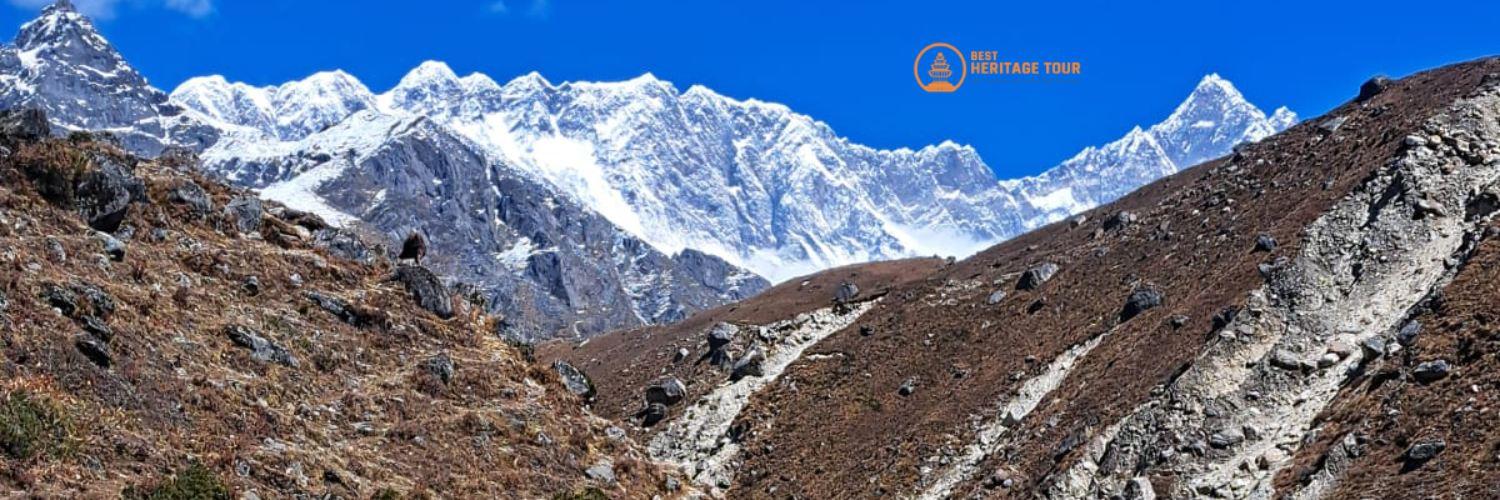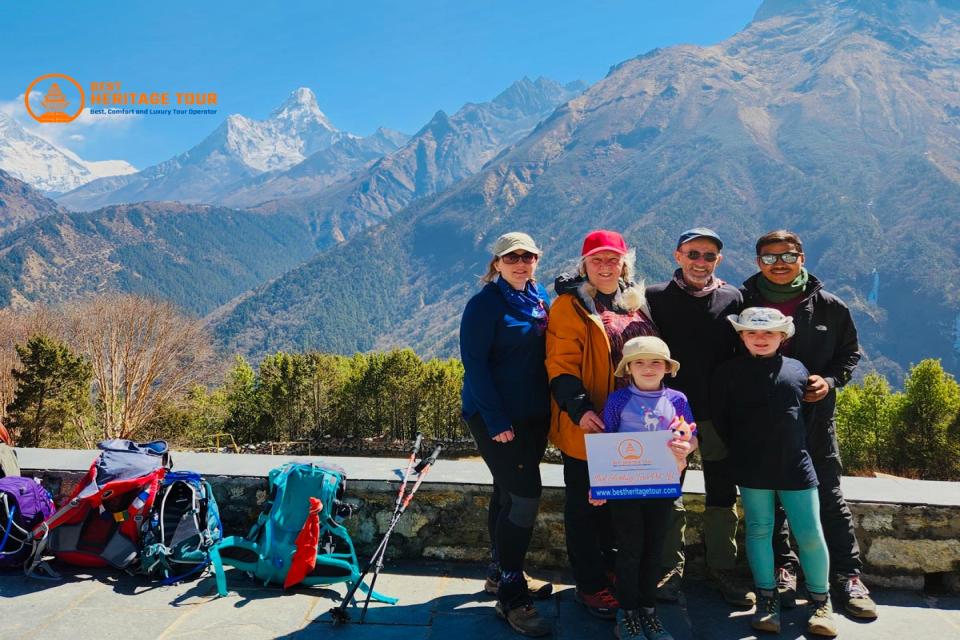The Everest Base Camp (EBC) trek is a dream adventure for trekkers worldwide. Towering peaks, stunning glaciers, and Sherpa villages create an unforgettable experience. But for today’s travelers, trekking doesn’t mean completely disconnecting. Many want to share photos, stay in touch with family, or even work remotely while trekking. This raises an important question: How does Wi-Fi work at high altitude, especially above 5,000 meters in the Himalayas?
In this guide, Best Heritage Tour explains the technology, limitations, and practical tips for staying connected on the Everest Base Camp trek. From teahouse Wi-Fi to mobile networks and satellite options, we cover everything you need to know to remain online safely, even in one of the world’s most remote regions.
Why Trekkers Want Wi-Fi During the EBC Trek
While part of the adventure is about disconnecting, staying connected has become an essential part of trekking for several reasons:
-
Safety and Communication
Trekking in remote areas requires regular updates to family and guides, especially in emergencies. Mobile connectivity or Wi-Fi can be a lifeline. -
Sharing Experiences
Many trekkers want to share live updates, photos, or videos from the trail. Instagram stories, WhatsApp updates, or emails keep loved ones updated. -
Remote Work or Digital Nomads
A growing number of travelers combine trekking with remote work. Reliable Wi-Fi allows them to check emails, attend calls, or work on projects from high-altitude lodges. -
Navigation and Weather Updates
Real-time weather forecasts and trail maps accessible online help trekkers plan safer ascents, especially near high passes like Thorong La. -
Entertainment and Leisure
After long days of trekking, watching a video, reading online, or checking social media helps trekkers relax and stay motivated.
Challenges of Internet Connectivity at High Altitudes
Providing Wi-Fi or mobile internet in the Himalayas is technically challenging. The factors affecting connectivity include:
-
Remote Location: The EBC trail is far from urban infrastructure. There are no standard broadband lines, and connectivity relies on specialized wireless networks.
-
Mountainous Terrain: Peaks, valleys, and glaciers block signals, making mobile and Wi-Fi signals spotty or intermittent.
-
Power Supply Issues: Most lodges rely on solar panels, small generators, or battery backups. Outages affect Wi-Fi reliability.
-
Weather Conditions: Snow, fog, and storms can disrupt wireless signals at high altitudes.
-
Altitude Effects: Although altitude doesn’t affect signal propagation directly, extreme cold can impact electronics and Wi-Fi devices.
Understanding these limitations helps set realistic expectations for connectivity on the trek.
Types of Internet Access on the EBC Trail
Trekkers have several ways to stay connected on the Everest Base Camp trek:
1. Wi-Fi from Teahouses and Lodges
Most teahouses from Namche Bazaar upwards provide Wi-Fi services, usually powered by Everest Link, the local network provider.
-
Common in Namche, Tengboche, Dingboche, and Gorak Shep.
-
Speeds are generally slow (1-3 Mbps), enough for WhatsApp, emails, or light browsing.
-
Usage is usually paid per MB or per session.
2. Mobile Data (Ncell & Nepal Telecom)
Both Ncell and Nepal Telecom (NTC) offer coverage along the trek.
-
Ncell: Better coverage from Lukla to Gorak Shep; can reach Base Camp.
-
NTC: Limited coverage above Namche Bazaar; better in lower villages.
-
Mobile data works with SIM cards bought in Kathmandu.
-
Speeds are slower at higher altitudes and can be affected by weather.
3. Everest Link and Airlink Systems
Everest Link is the main Wi-Fi network along the Everest region.
-
Provides connectivity from Namche Bazaar up to Gorak Shep.
-
Offers both daily and monthly Wi-Fi cards for tourists.
-
Used in teahouses to create a shared hotspot.
-
Network quality varies; users may need patience during peak usage.
4. Satellite Internet
Satellite services like Starlink or Iridium are rare but possible:
-
Primarily used for emergencies, trekking agencies, and scientific teams.
-
High cost but provides reliable connectivity anywhere.
-
Not typically needed for casual trekkers, but useful for remote communication or work.
How Everest Link Works
Everest Link is a Nepali telecom innovation, designed specifically for high-altitude trekking areas:
-
Local Base Stations: Wireless towers are installed in Namche Bazaar, Tengboche, and Dingboche.
-
Wireless Signal Transmission: Signals are sent via microwave links to remote lodges, bypassing the need for cables.
-
Hotspot Access in Lodges: Wi-Fi hotspots in teahouses allow multiple trekkers to connect using purchased Wi-Fi cards.
-
Authentication and Payment: Cards are purchased at local shops or lodges. They can be daily, weekly, or monthly, depending on your needs.
This network ensures trekkers can stay online, share updates, or check essential info, even in remote high-altitude villages.
Wi-Fi Availability by Major Stops
Connectivity varies by settlement along the EBC trek. Here’s what trekkers can generally expect:
|
Village / Stop |
Altitude |
Wi-Fi Availability |
Notes |
|---|---|---|---|
|
Lukla |
2,860m |
Limited |
Small lodges, slow network |
|
Phakding |
2,610m |
Rare |
Mostly offline, occasional hotspot |
|
Namche Bazaar |
3,440m |
Good |
Everest Link hotspots in lodges |
|
Tengboche |
3,870m |
Moderate |
Wi-Fi depends on weather; teahouses may charge |
|
Dingboche |
4,410m |
Good |
Everest Link, solar-powered |
|
Lobuche |
4,940m |
Moderate |
Wi-Fi slower, limited time slots |
|
Gorak Shep |
5,164m |
Limited |
Only select lodges; slow speed |
|
Everest Base Camp |
5,364m |
Rare |
Mostly offline; satellite only in emergencies |
Wi-Fi availability improves in villages with more lodges and diminishes at higher altitudes where fewer facilities exist.
Average Speed and Reliability
-
Typical Speed: 1-3 Mbps; suitable for messaging and emails.
-
Video Streaming: Limited; buffering likely.
-
Dropouts: Common during peak hours or bad weather.
-
Device Limits: Hotspots can connect 5-10 devices simultaneously; performance drops with more users.
Trekkers should adjust expectations and plan for offline content, especially for photos and videos.
Costs and Access Methods
-
Wi-Fi Cards: Purchased locally in Namche Bazaar or teahouses.
-
Daily Access: USD 3-5 per day; enough for messages and light browsing.
-
Weekly/Monthly Plans: Cost-effective for long treks; USD 15-25.
-
Mobile Data: Rechargeable SIM packs, about USD 5-10 for 1-2 GB; slower at higher altitudes.
Always carry backup cash to buy Wi-Fi cards or recharge mobile data in small towns.
Mobile Network Coverage: Ncell vs NTC
-
NTC: Reliable coverage along most of the trail; better above Namche Bazaar.
-
Ncell: Limited above Namche; sometimes only available below 4,000m.
-
Both networks require local SIM cards bought in Kathmandu or Lukla.
-
Tips: Carry a dual-SIM phone and recharge ahead of time.
Power Supply and Charging Facilities
Wi-Fi is useless without power. Most lodges offer charging facilities:
-
Solar-powered: Common from Namche Bazaar upward.
-
Battery backup / generators: Limited hours; peak demand in evenings.
-
Cost: USD 1-3 per charge.
Trekkers should carry a power bank (10,000-20,000 mAh) to stay connected between charging opportunities.
Alternatives When Wi-Fi Fails
Sometimes connectivity is impossible due to weather or infrastructure limits. Alternatives include:
-
Satellite phones: Reliable but expensive; usually used by expedition groups.
-
GPS trackers / Personal locator beacons: Useful for safety and sharing real-time location.
-
Offline apps: Maps, weather forecasts, and trail guides downloaded before trekking.
Planning offline backups ensures safety and smooth navigation regardless of Wi-Fi status.
Tips for Staying Connected Wisely
-
Plan your online time: Avoid over-reliance on Wi-Fi; enjoy the experience.
-
Upload photos selectively: Compress files to save bandwidth.
-
Download maps and guides in advance.
-
Use messaging apps for text updates instead of heavy media.
-
Carry power banks and extra device cables.
Balanced use ensures connectivity without compromising the trek experience.
Conclusion: Stay Connected Safely with Best Heritage Tour
The Everest Base Camp trek is one of the world’s most remote yet awe-inspiring journeys. While trekking above 5,000 meters, staying connected is a challenge, but thanks to Everest Link, mobile networks, and satellite technology, you can share your adventure, stay in touch with family, and access essential information safely.
By planning ahead - understanding Wi-Fi availability, charging options, and offline backups - you can enjoy the best of both worlds: the thrill of high-altitude trekking and the convenience of modern connectivity.
At Best Heritage Tour, we guide trekkers through the EBC trail with expertise, ensuring logistics, safety, and connectivity tips are all taken care of. Focus on the mountains, the culture, and the experience - we’ll handle the rest.
Contact Best Heritage Tour
Phone / WhatsApp / Viber: +977-9851149197 / +977-9810043046
Email: info@bestheritagetour.com | bestheritagetour@gmail.com
Website: www.bestheritagetour.com
Office: Thamel Marg, Kathmandu, Nepal
Author: Best Heritage Tour
Date: 6th November, 2025






